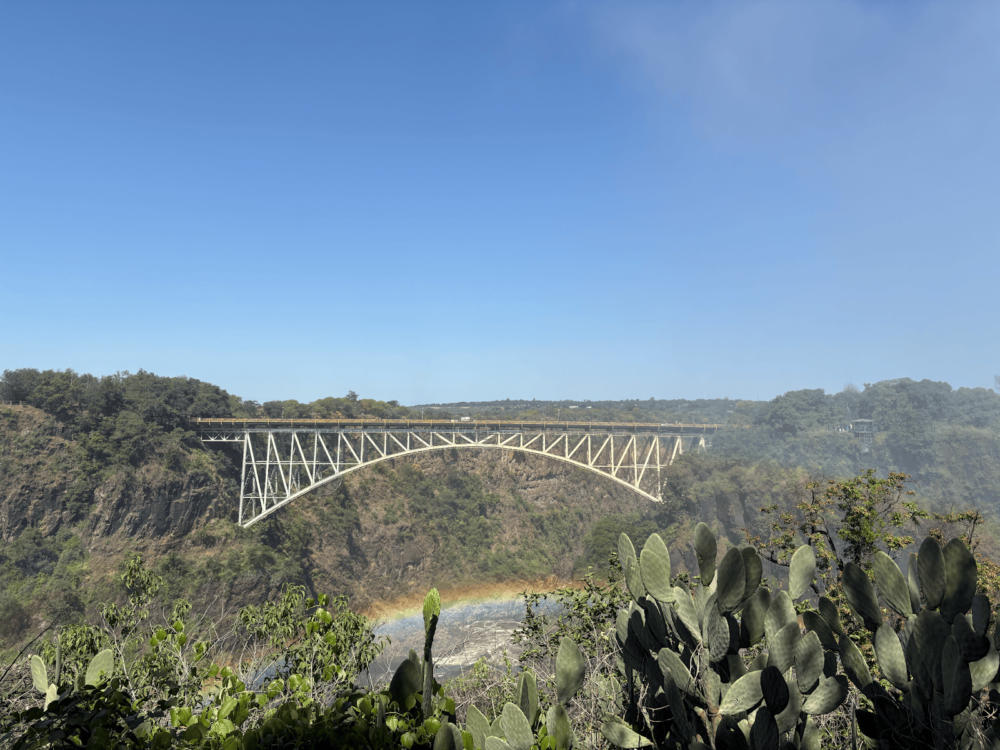Last month in Zambia, I witnessed firsthand how the country’s crippling energy crisis threatens to derail investments in the Lobito Corridor project — and the entire purpose of the mega project. It also exposes an immediate weakness in US efforts to provide an alternative to Chinese influence.
Core background
The Lobito Corridor is an infrastructure initiative connecting Angola’s Atlantic port to the mineral-rich Copperbelt region in Zambia and the Democratic Republic of Congo by rail. The project involves multiple partners, including the U.S. Development Finance Corporation (DFC), the African Development Bank, the Africa Finance Corporation, and other G7 partners who have collectively committed over $6 billion to develop various aspects of the corridor. It is intended to package a revitalized rail network with critical minerals development and other agriculture, clean energy, health infrastructure, and digital access investments.
The DFC has committed $553 million in loans to infrastructure along the Corridor, primarily for upgrading and operating a rail line to Angola’s Lobito port and investing in water treatment plants to enhance health security. Once completed, the Lobito Corridor is intended to strengthen supply chains for critical minerals while expanding U.S. influence in a region largely dominated by China.
The lack of sufficient electricity in Zambia, however, is slowing down the mining industry — and the Lobita Corridor with it. Without reliable energy, the rail infrastructure connection to Angola’s port will fail to expand a thriving minerals industry, as mining operations and processing facilities will continue to be constrained by power shortages. So the energy shortages are both a threat to the project and highlight a gap in the US approach.
Compare the US effort to China’s. China is investing in substantial power generation capacity, including a recently approved 300MW coal-fired power plant, to address Zambia’s energy crisis while also expanding its mining presence. Meanwhile, the DFC and its partners are allocating only very modest resources to Zambia’s energy needs: a $40 million liquidity facility for renewable energy trading, a $4.2 million contribution to an AfDB initiative to develop bankable green infrastructure projects, a feasibility study for a solar plant, and a $1.5 million grant for solar-powered irrigation equipment. So, the US and its partners focus on renewables and innovation, and China’s expansion of baseload power are both attempts to address the same energy security challenge but with different timeframes, scopes, and priorities. US strategy may yield greater long-term sustainability, while China’s scope is set on delivering immediate, reliable power.
Zambia’s energy crisis threatens mining operations…
Zambia is enduring the worst drought in 20 years, making its hydroelectric-dominated energy infrastructure vulnerable to outages and often reducing power supply to less than 25% of regular capacity. Daily power cuts up to 21 hours are frequent, and mines have been forced to adapt by scaling down operations. The mining sector contributes to about 14% of the country’s GDP and consumes about 7,650 GWh annually, close to twice the consumption amount of households, the second highest consumption category. Without more reliable energy, the DFC is building a highway to a destination that cannot keep its lights on, a strategic contradiction that demands immediate attention.
During my time in Zambia, I learned from a leading local financial advisory firm that energy insecurity has become the primary barrier to investment across all sectors. Experienced developers (with deep pockets and a sound track record) explained that guaranteed power is their single biggest hurdle.
… and will impact the success of DFC investments.
Zambia’s power shortfall has direct consequences on the success of the Lobito Corridor:
- No energy, no mining. The purpose of the railways is to bring minerals from mine to port. Without reliable electricity for the mines, the entire premise of the Lobito Corridor is under threat.
- Lack of energy also affects the vital businesses that support the mining industry. Small businesses provide essential services to the mining sector, such as equipment maintenance, logistics, catering, and technical support. These firms are in many cases forced to shut down or invest in expensive small-scale power generation tools to maintain operations that serve as critical links in the mining supply chain. In Zambia, I saw firsthand how small businesses are impacted by blackouts, forcing workers to turn away customers and delay their services. I met with the CEO of a Zambian mining logistics company operating throughout the Corridor, who described the domino effect of power outages at the mines, creating uncertainties all down the value chain.
- Extraction without local development jeopardizes the long-term viability of the DFC’s investment. Without reliable power, the Lobito Corridor risks becoming merely an extraction pathway for raw materials rather than a catalyst for a stronger mining sector that can grow the local economy. The Zambian government wants to boost minerals exports, but it also wants more local job creation. That means more power.
To fulfill the original vision of the Lobito corridor, the DFC should treat energy security as a prerequisite for achieving U.S. critical minerals goals. Energy security is a cornerstone of any critical minerals investment due to its energy-intensive nature. Without reliable energy, mining operations grind to a halt.

